Shallow M5.1 earthquake hits Sparta, North Carolina – the strongest in the state since 1916
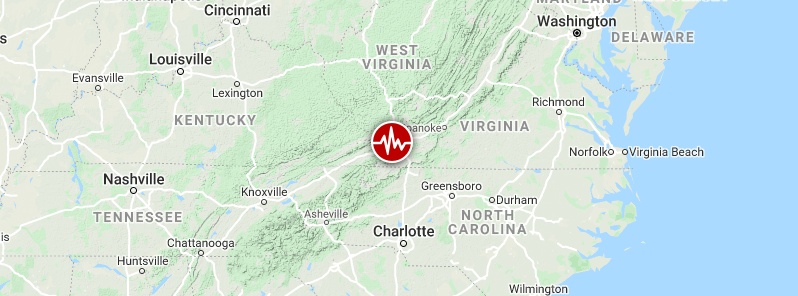
A very shallow earthquake registered by the USGS as M5.1 hit Sparta, North Carolina, U.S at 12:07 UTC (08:07 LT) on August 9, 2020, causing widespread damage. The agency is reporting a depth of 3.7 km (2.3 miles). This is the strongest earthquake to hit North Carolina since M5.2 in 1916.
The epicenter was located 4.1 km (2.6 miles) SE of Sparta (population 1 726), 43.5 km (27 miles) W of Mount Airy (population 10 354), and 59.5 km (37 miles) ENE of Boone (population 18 156), North Carolina.
1 000 people are estimated to have felt very strong shaking, 5 000 strong, 20 000 moderate, and 568 000 light.
More then 45 000 people submitted their "Did You Feel It" reports to the USGS in the first few hours.
"The quake occurred as a result of oblique-reverse faulting in the upper crust of the North American plate," the USGS said.
Focal mechanism solutions for the event indicate rupture occurred on a moderately dipping fault either striking to the northwest or south.
This earthquake occurred in the interior of the North American plate — intraplate earthquake. These are generally less common than interplate earthquakes that happen near tectonic plate boundaries.
"Large earthquakes are relatively uncommon in the region directly surrounding this earthquake," USGS added.
Moderately damaging earthquakes strike the inland Carolinas every few decades, and smaller earthquakes are felt about once each year or two. In the 20th century, one earthquake M5 and larger occurred within 100 km [62 miles] of the epicenter, a M5.2 in the Great Smoky Mountains in 1916.
The largest recent earthquake to impact the east coast was the M5.8 Mineral Virginia earthquake on August 23, 2011, roughly 300 km (186 miles) to the northeast of today's earthquake. The Mineral Virginia earthquake was felt widely across the east coast and caused slight damage.
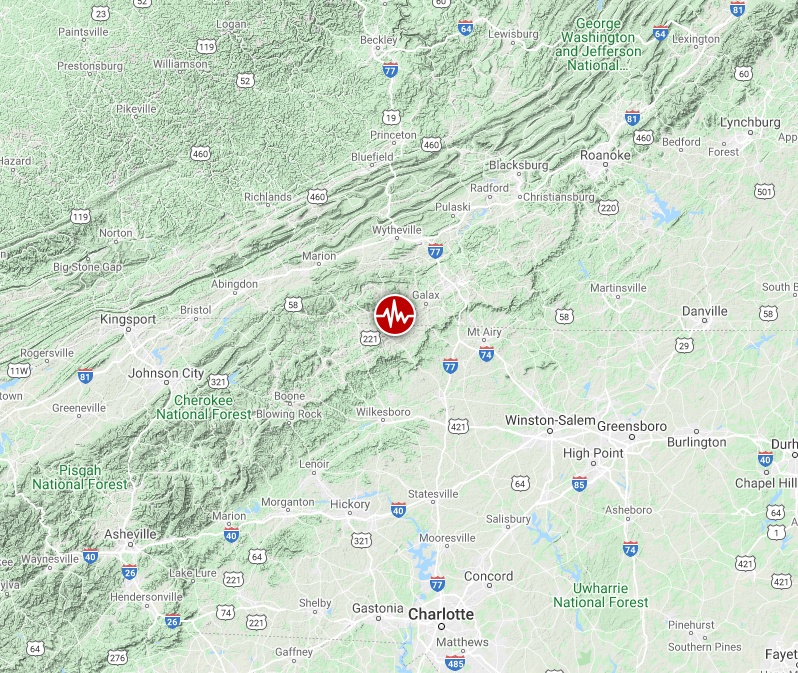
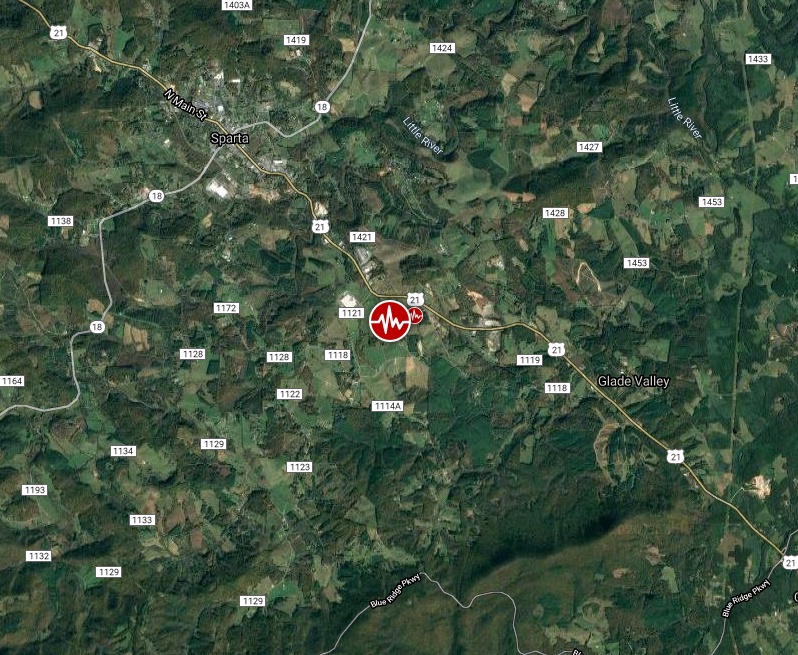
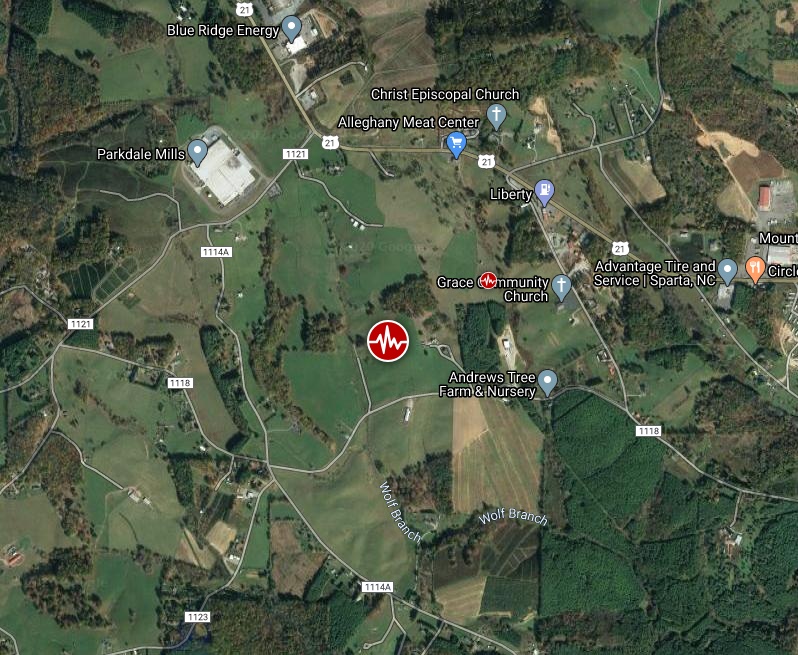
Credits: TW/SAM, Google
This earthquake was preceded by at least four small foreshocks ranging from M 2.1-2.6, beginning about 25 hours prior to the mainshock. and followed by M1.8 at 17:45 UTC.
USGS scientists expect that this event will trigger aftershocks, but these will decrease in frequency over time.
According to their forecast, there is a 1 % chance of one or more aftershocks that are larger than magnitude 5.1 over the next 7 days. It is likely that there will be smaller earthquakes over during the same period, with 0 to 11 magnitude 3 or higher aftershocks.
Magnitude 3 and above are large enough to be felt near the epicenter. The number of aftershocks will drop off over time, but a large aftershock can increase the numbers again, temporarily.
Estimated population exposure to earthquake shaking
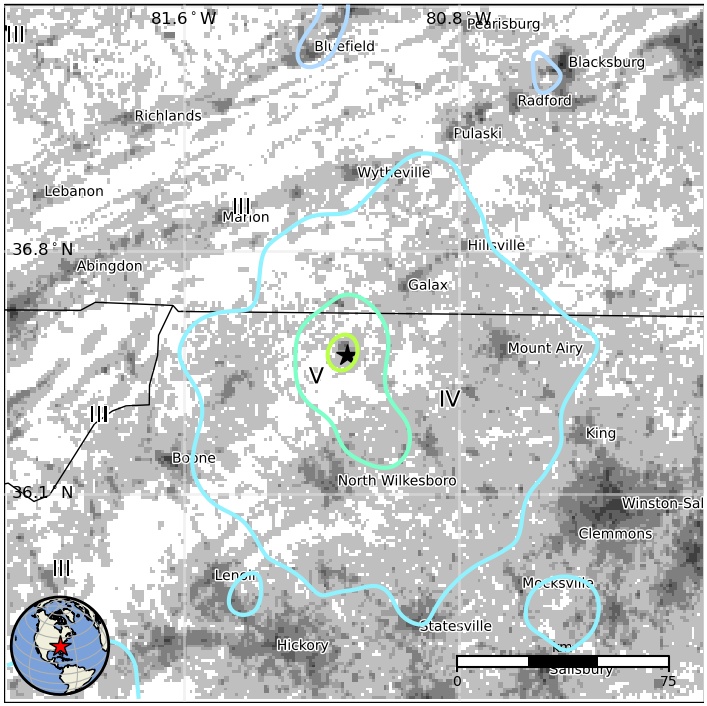
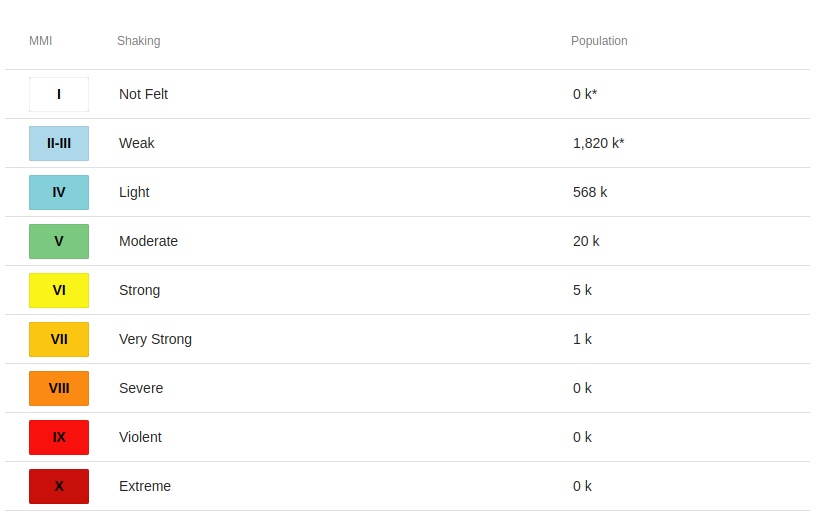
Selected cities exposed
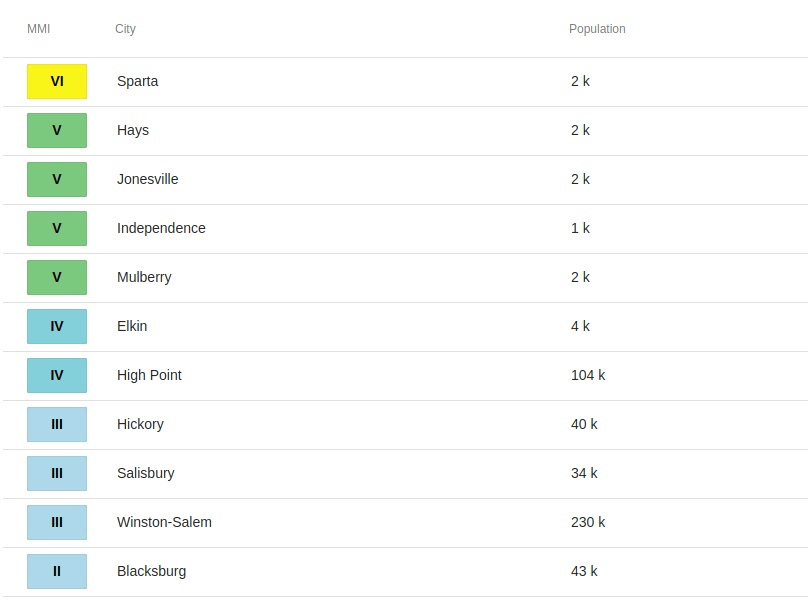
Regional seismicity
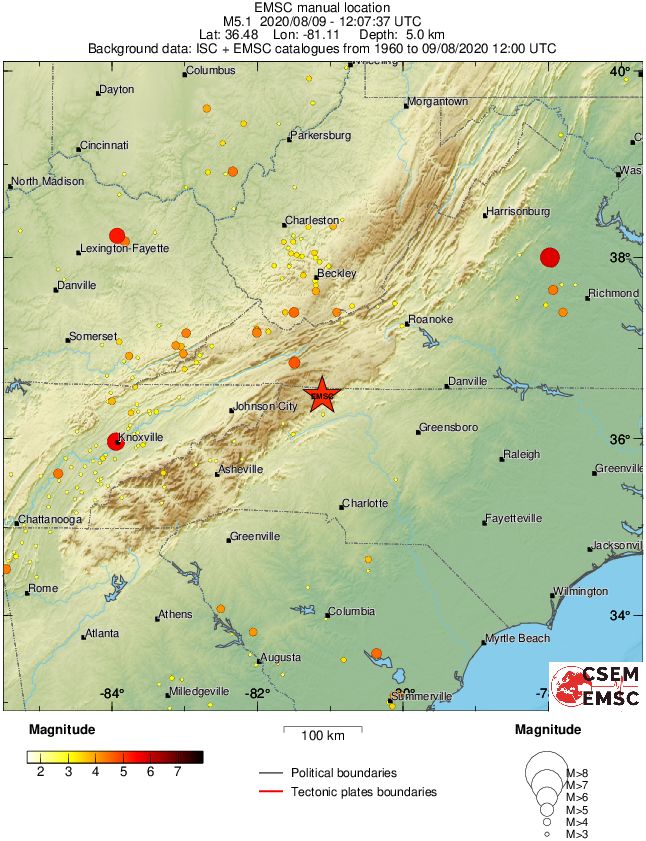
Multimedia
WOAH!
A #Sparta woman tells me she’s been on the phone trying to contact her insurance company because this is what the #earthquake did in her kitchen. She says her 94-year-old father was here and very scared. @FOX46News pic.twitter.com/8YJiXfC5Va
— Destiny McKeiver (@DestinyM_TV) August 9, 2020
RIGHT NOW: Reports of widespread damage in #Sparta #North #Carolina where a 5.1 magnitude #earthquake hit. NC’s largest earthquake in 94 years. @FOX46News pic.twitter.com/KuUjgCZFUS
— Destiny McKeiver (@DestinyM_TV) August 9, 2020
Earthquake Damage: Images from Chestnut Grove Church Road, Sparta, NC pic.twitter.com/5pGd1HrQrZ
— Chad Tucker (@ChadTucker) August 9, 2020
Earthquake Video: Adam Whitley's home surveillance camera in North Wilkesboro captured the quake. #SOUNDUP pic.twitter.com/bvRNvnIzBX
— Chad Tucker (@ChadTucker) August 9, 2020
Earthquake Damage: Chimney collapsed at Little River Bridge. Highway 21 south of Sparta, NC pic.twitter.com/GVRkjJPZqK
— Chad Tucker (@ChadTucker) August 9, 2020
Featured image credit: TW/SAM, Google

Commenting rules and guidelines
We value the thoughts and opinions of our readers and welcome healthy discussions on our website. In order to maintain a respectful and positive community, we ask that all commenters follow these rules.